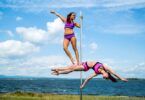Welcome to our article on “Self-Confidence in Sports: How Gender Affects Performance.” In the world of sports, self-confidence plays a vital role in an athlete’s performance and overall success. However, the impact of gender on self-confidence and how it influences athletic performance is a topic that deserves closer examination. Gender-related factors, societal expectations, and stereotypes can significantly affect an athlete’s self-belief and, consequently, their performance on the field or court.
Understanding the Complexities: Self-Confidence, Gender, and Sports Performance
In this article, we delve into the complex relationship between self-confidence, gender, and sports performance. We explore the unique challenges and pressures faced by athletes of different genders, as well as the underlying psychological factors that can shape their self-perception and confidence levels. By understanding these dynamics, we aim to shed light on the importance of addressing gender-related issues in sports and fostering an inclusive and empowering environment for all athletes.
Whether you’re an athlete, coach, or sports enthusiast, join us as we navigate the fascinating intersection of self-confidence, gender, and athletic performance. Together, let’s explore strategies to boost self-confidence, challenge gender stereotypes, and create an environment that nurtures the full potential of every athlete, regardless of their gender.
Self-Confidence in Sports: if we tried to define what self-confidence is, we could say that it is a feeling which can make a person trust himself and the actions he is about to take by being confident that his abilities will lead to good results.
Self-confidence is actually two things.
- The general is the typical trait of a person’s character
- special one, which is the assurance a person has in dealing with specific situations such as a match, an examination etc.
Unveiling Gender Dynamics: Self-Confidence in Sports
For many centuries, women were excluded from competitive sports due to their distinctive nature, which was an obstacle to the requirements of the top-class sport. It was only in 1972 that a law was implemented banning sex inequality. Since then, many types of research measured and recorded the data about self-confidence.
So, recent research results reveal that women are quite influenced by the nature and the characteristics of the task that they have to perform. For example, in the case of doing a sport that is traditionally thought to be masculine (e.g. body building), ιt is highly likely that they will demonstrate lower self-confidence in comparison with men.
However, there are variations over the past few years. Conditions and role models have changed. As a result, sports that were once strictly considered to be masculine have now been taken up by women who excel at them (triple jump, football, hammer, etc.)
The Impact of Instruction Accuracy on Self-Confidence in Sports
Furthermore, another factor detected by scientists about self-confidence and sports is the accuracy of instructions. In particular, women appear to need clear instructions and feedback relevant to the task they perform to demonstrate the same levels of self-confidence when compared with men. Lastly, women act with greater confidence when their main target is to cooperate and not to compete.
However, it is not rare to see coaches who have to deal with issues regarding female athletes rather than male ones, both in individual and team sports.
Pole Dancing and Aerial Acrobatics: Empowering Fitness for All
Pole dancing and aerial acrobatics, once associated mainly with femininity, have evolved into inclusive and empowering fitness disciplines for individuals of all genders, backgrounds, and skill levels. These dynamic forms of physical activity offer a wide range of benefits beyond the stereotypical notions. They have become avenues for self-expression, body positivity, and increased self-confidence, catering to everyone looking to embark on a transformative journey.
Regardless of your gender, age, or previous experience, pole dancing and aerial acrobatics provide opportunities for personal growth and physical development. These activities celebrate the uniqueness of each individual, promoting body acceptance and encouraging participants to embrace their strengths and challenges. By engaging in these disciplines, you can experience the joy of movement, discover new abilities, and nurture a positive relationship with your body.
Embrace the inclusive nature of these disciplines and embark on a journey of self-discovery, empowerment, and improved well-being. Let go of preconceived notions, challenge societal stereotypes, and embrace the transformative power of pole dancing and aerial acrobatics.
To learn more about the therapeutic potential of physical exercise in treating depression, you can explore our article “Physical Exercise as a Means of Treatment Against Depression.”
References Bandura, A. (1977). Self-efficacy: Toward a unifying theory of behavioral change. Psychological review, 84, 191-205. Bandura, A. (1977). Self-efficacy: The exercise of control. San Francisco, CA: Freeman. Harter, S. (1978). Effectance motivation reconsidered: Towards a developmental model. Human Development, 21, 34-64. Hatzigeorgiadis, A., & Biddle, S. (1999). The effect of goal orientation and perceived competence on cognitive interference during tennis and snooker performance. Journal of sports behavior, 22, 479-501. Vealey, R. S. (1986). Conceptualization of sport-confidence and competitive orientation: Preliminary investigation and instrument development. Journal of Sport psychology, 8, 221-246.








